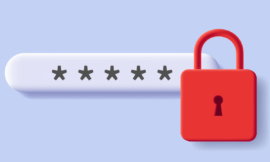In the ever-evolving landscape of the digital world, phishing scams have emerged as a prevalent threat to our online safety. As more of our personal and professional lives migrate to the virtual realm, it’s crucial to understand how to recognize and protect ourselves from these deceptive maneuvers.
Understanding Phishing: The Bait That Can Bite 🐟🔍
Phishing scams are fraudulent attempts by cybercriminals to obtain sensitive information by disguising themselves as trustworthy entities. Imagine fishing, where a bait is used to catch a fish. Similarly, phishing uses enticing emails or messages as bait, with the intent to trick you into revealing personal details.
Spotting the Hook: Signs of a Phishing Attempt 🕵️♂️🚩
Phishing attempts can be sophisticated, but there are tell-tale signs that can help you spot them:
- Unusual Sender or Odd Email Addresses
Legitimate organizations usually send emails from professional domains. If an email comes from a suspicious or mismatched address, it’s a red flag.
- Urgency and Fear Tactics
Phishing emails often create a sense of urgency or fear. Be wary of emails demanding immediate action, especially involving personal information or finances.
- Suspicious Links and Attachments
Never click on links or download attachments from unknown or untrustworthy sources. These can lead to malicious websites or download malware onto your device.
- Spelling and Grammar Mistakes
Professional entities typically ensure their communication is free from errors. Noticeable spelling or grammatical mistakes can be a sign of phishing.
- Unusual Requests for Personal Information
Be cautious if you’re asked for sensitive information like passwords, credit card numbers, or social security numbers, especially if the request seems out of context.
Reeling It In: How to Avoid Getting Hooked 🛡️🚫
To safeguard against phishing, follow these steps:
- Verify the Source
If an email or message looks suspicious, verify its authenticity. Contact the organization directly using a trusted method, not the contact information provided in the suspicious message.
- Use Spam Filters and Antivirus Software
Ensure your devices have updated antivirus software and spam filters. These tools can help detect and block phishing attempts.
- Update Regularly
Keep your operating system, software, and applications updated. Cybercriminals often exploit vulnerabilities in outdated software.
- Be Cautious with Personal Information
Be mindful of the information you share online. Think twice before entering sensitive information, especially on unfamiliar websites.
- Educate Yourself and Others
Stay informed about the latest phishing techniques. Share this knowledge with friends, family, and colleagues to create a more informed and secure community.
Phishing Variants: Not Just a Simple Hook 🎣💡
Phishing comes in various forms, each with its unique method of tricking victims:
- Spear Phishing: Targets specific individuals or organizations.
- Whaling: Targets high-profile individuals like CEOs.
- Vishing: Uses phone calls instead of emails.
- Smishing: Utilizes SMS messages.
In Conclusion: Stay Alert, Stay Safe 🚨🛡️
Phishing scams are a serious threat, but by staying informed and vigilant, you can significantly reduce your risk of becoming a victim. Remember, it’s better to be cautious than to reel in a problem!
























